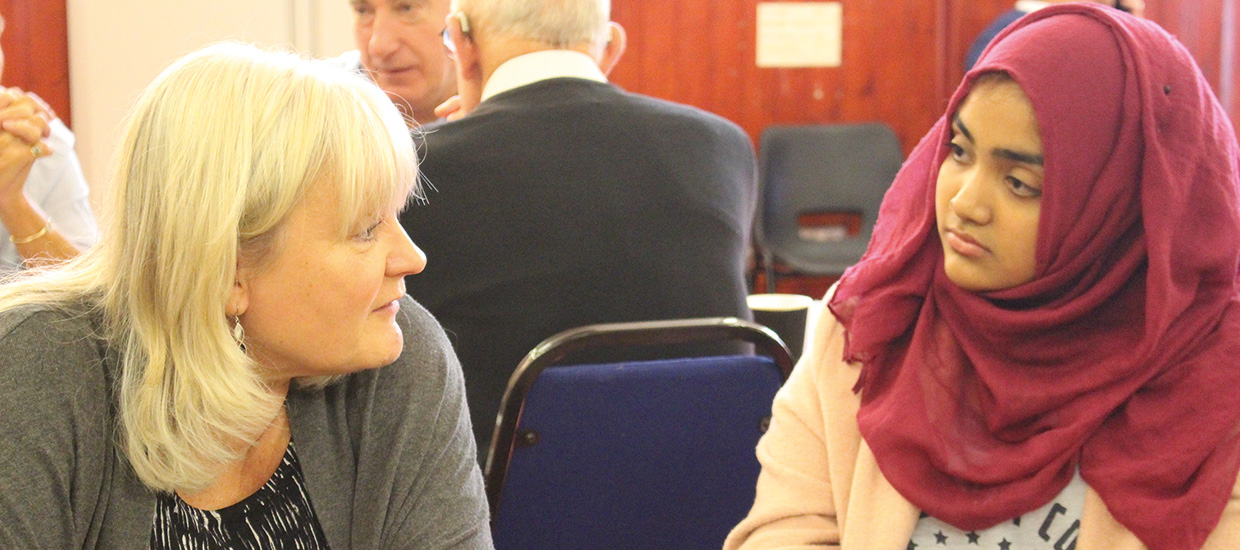National Lottery Heritage Fund
The National Lottery Heritage Fund has changed its name and streamlined its grants programme. Jane Hughes reports on the new opportunities available for schools

‘Heritage can mean different things to different people, but in essence it can be anything from the past that we value and want to pass on to future generations,’ says Sarah Lanchin, the National Lottery Heritage Fund
‘We want young people to come up with ideas that are relevant to them and that they feel passionately about, whether that be initiatives that instil a sense of belonging and identity, or virtual-reality projects that enhance digital skills. We’re keen to support projects that not only add depth to the curriculum but also encourage pupils to become co-producers and leaders themselves, perhaps through running youth forums or taking part in decision-making workshops.’
Formerly the Heritage Lottery Fund, the National Lottery Heritage Fund’s new name makes explicit the fact that its funding comes from the National Lottery. Moreover, the accompanying funding framework has been simplified into one big pool of grants, organised into three broad bands: small (£3,000 to £10,000), medium (£10,000 to £250,000) and large (£250,000 to £5million).
Much decision-making has been devolved to regional committees so that funding is more clearly focused on the heritage that matters to local communities. Every heritage project must meet socially inclusive and environmentally friendly criteria, but beyond that applicants have complete freedom in how to shape their own initiatives.
‘For school children, heritage is an important way of learning more about who they are and where they come from,
What
All applications go through the same process and the National Lottery Heritage Fund welcomes ideas, says Sarah Lanchin. It is also offering greater support for 13 under-funded communities. These are Brent, Newham and Enfield (all Greater London), North Lanarkshire and Inverclyde (Scotland), Neath Port Talbot and Rhondda Cynon Taff (Wales), and Corby, Knowsley, Luton, North East Lincolnshire, Tendring and Walsall (England).
How to apply
- All projects must have a clear plan and timescale, with a defined start, middle and end. To apply for a grant, create an account at heritagefund.org.uk/funding/sign-in.
- Grants are divided into three bands: £3,000-£10,000, £10,000-250,000 and £250,000-£5million. There are no deadlines for grants up to £100,000 so applications can be made at any time, and decisions are made within eight weeks.
- For grants between £100,000 and £5million, the deadlines are quarterly. The next deadline is 20 August 2019 for a decision in November2019. Applicants must contribute a percentage of project costs (at least five per cent for grants up to £1million and at least ten per cent for grants of £1million of more), which may come from other funding partners.
- All applicants for a grant between £10,000 and £250,000 must submit a project enquiry form. Those above £250,000 must complete a short expression of interest (EOI) form.
Top Tips
- Follow the online guidance on how to fill in the application form.
- Explain the project clearly, stick to word counts and don
’t duplicate your answers. - Convey your passion about the project.
- Show that you have consulted with heritage partners (such as museums, libraries, wildlife trusts) who can bring specialist expertise that will engage young people.
Previously funded projects
Making young people feel connected to their locality was at the heart of the Living Legacy project run by George Green
The project marked the school
Members of the computer club at Lever Park School in Bolton wanted to enhance their understanding of the computer gaming industry by exploring the history of computer games and their impact on society. They were awarded a National Lottery Heritage Fund grant of £44,800 to assist them in investigating, exploring and interpreting how the industry has evolved, with a focus on video games, technology, designers and players. The pupils underwent interview training and worked with a local radio station so they could capture oral histories from people who have made and played computer games over the years. They also visited the Centre for Computing History museum in Cambridge to learn more about how games are produced. The group designed an interactive exhibition space to teach other pupils about the heritage of the UK
To explore the impact of World War I on their rural Welsh community, pupils at the former Tonypandy Community College (now Ysgol Nantgwyn) were awarded a National Lottery Heritage Fund grant of £34,700. The student-led project aimed to build understanding of the war by looking at how it affected the local communities of Rhondda.
Students partnered with the Rhondda Remembers WWI group, made up of local history experts, community members and professionals. They conducted research (in the national press, cartoons, letters, music and films of the era), and received training in order to make a film and an app that will provide a lasting legacy.
For more information
Visit the National Lottery Heritage Fund website.
More on grants
- ‘Meet the grant provider: The Co-operative Bank’
- 10 steps to grant success
- Write a successful grant bid
- How to fund an ambitious project
